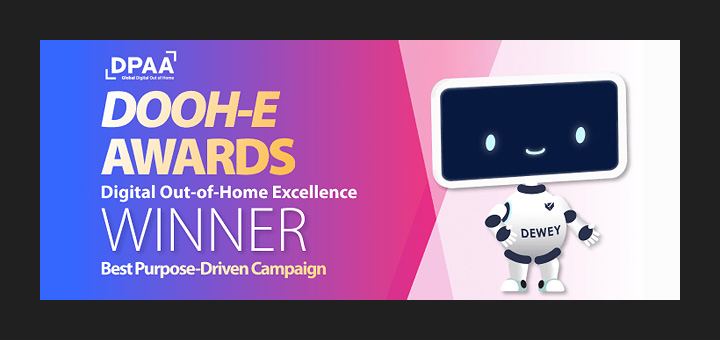Coming Soon: A Cookieless Future? Audience Insights Prevail
By Paul DeJarnatt, VP, Digital at NOVUS
It’s no secret that third party data (3P) is under pressure. Many marketers have tested data sources over the years, and overwhelmingly 1P data has proven more valuable than 3P data by a considerable margin. Even before the threat of cookie deprecation, marketers knew they got better results from 1P data.
Where 3P data became valuable was scale and incrementality – how do we take the known characteristics of our best customers (1P) and find others like them (3P)? The urgency toward this end is greater than ever before.
Our industry has been controlled by extremes: In the Mad Men era, advertising was defined by audience insight en masse. Over time, it’s evolved to become highly individualized, with more reliance on the technological capabilities of targeting and using behavioral signals of each individual to find the right ad than on capturing that stellar insight.
With the deprecation of 3P cookies, I believe audience insights and understanding will trump targeting and technology. It’s strange for a digital lead to say that – after all, all of our buying systems are built to enable us to leverage data to drive targeting and personalization: Why go back to the good ol’ insight?
Today, we’re finding that using data exclusively is not efficient: it’s crucial to also analyze and value that customer perspective too.
As an industry, we’ve gone too far down the tech path and gotten lazy about mining for insights. We say we do it, but in fact we’ve deprioritized the human element, the understanding of what makes a community tick. What common set of values are below the surface of a community / city / suburb / zip code that answer why people gather together in a certain geospatial area? How do we leverage these insights in a way that counteracts the loss of scale we will encounter when the 3P-driven lookalike pools dry up?
The new way to find audiences will be through various companies’ device and audience graphs – databases on customer information tied to various devices like phones, computers, televisions, tablets, etc. There is an audience graph arms race happening right now. AdTech and publishing companies are racing to build privacy-compliant, non-cookie-dependent data that can then be matched to advertisers’ 1P data in order to replicate that 3P scale and lookalike capability but in a way where the consumer has authorized the use of their data.
The advertising industry of the near future must strike a balance between audience insights and technology. First party data is a great way to start to build those customer insights. 1P data is still incredibly valuable and should be viewed as a strategic advantage – not just for targeting and personalization, but as fertile ground to discover insights to drive incremental business.
As with all data-driven insights, the quality and depth of that 1P data will dictate the success of a campaign. The richer a data set is, the more angles we can use to view the data and unearth something previously unknown and incredibly valuable about our customers and prospects. Then we apply the technology lens – evaluating the overlapping criteria points that can be leveraged by the advertising buying platforms to actually get the ad in front of the right customers at the right time. The pendulum is going to swing back to rewarding advertisers and agencies that prize individual customer insights: This knowledge can be leveraged to expand businesses in ways that are tied to deep knowledge of the client.
Advertisers who have done a tremendous job setting up their data infrastructure to extract the most value out of their own 1P data (often with the original strategy of driving personalization at scale) are the ones best positioned to use that data to mine for insights. Interestingly, those insights are not always universal in nationally-targeted buys – you may have found something that resonates in one area but not universally. If your business has a local element, this is a critical step not to be overlooked – don’t blend all data nationally and overlook the insights residing at the micro-community level.
For instance, in my work I utilize a geo-spatial approach in order to understand where products and messages will resonate geographically. Using crucial audience insights, advertising is focused via geography to avoid data costs that inflate CPMs. All of this data can be leveraged to provide insights into macro trends, and answer for how these macro trends amalgamate through pockets of people to define where they live. This gives businesses the knowledge of where these trends intersect with their business, insights that can be leveraged to optimize advertisements that will ultimately decrease waste and create efficient media buys. In the coming years, deep audience understanding, locally, is going to be more valuable than it has been in the past.
The challenge for advertisers who have charged towards individual targeting and personalization as a key pillar of their marketing strategy, however, is that these audience sizes are likely to be much smaller than they have been prior to the deprecation of the cookie. One of the biggest changes to the data landscape appeared with Apple’s iOS 14.5, which had users choose if they wanted to share their data freely with every app they used, and 90% of users chose not to share their data freely.
While there are still ways to get at that data (not everyone uses an iPhone, some people will opt back in for the right value exchange, etc.), the fact remains that personalization at scale, and the massive martech infrastructure investments that powered the strategy, require significant capital, organizational discipline, subject matter expertise, and dedicated teams to effectively manage the change into the cookieless future.
As far as the industry has gone to target individuals and leverage Adtech, it must now find balance between value, customer utility, and signal to consumers that they’re in control of their privacy and data. This transition to 1P data will give consumers more agency over their own data as companies work hard to understand what’s meaningful to them.
The companies who do this well understand their customers – and the results will be palpable.




